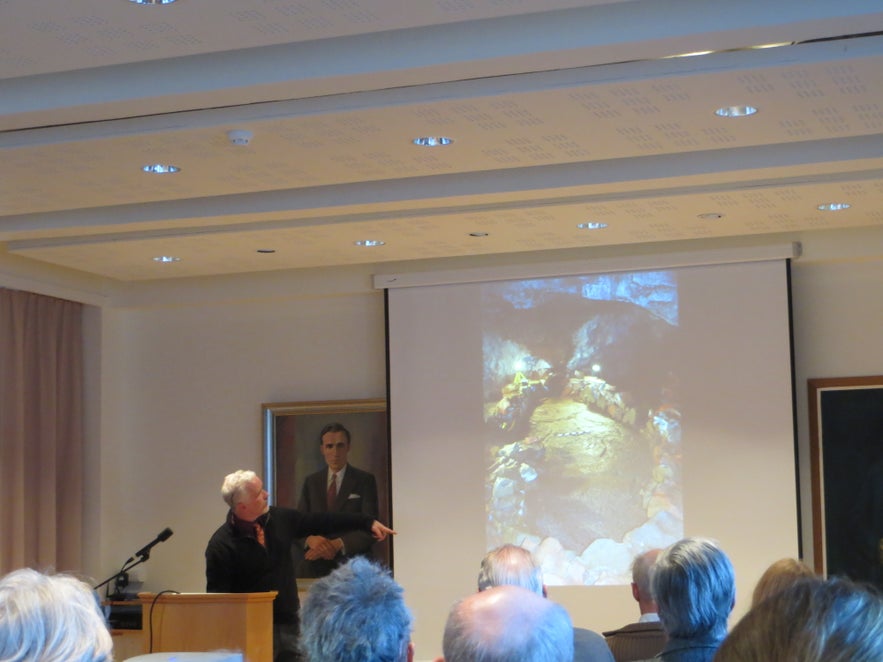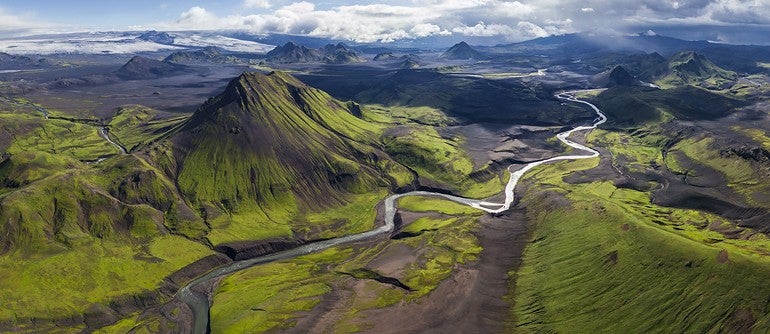(With the kind permission of Kevin B. Smith from Brown University - lecturing Reykholt on 22nd of February 2014)
ln the 13th century text Landnámabók (Pálsson and Edwards 1972), the 14th century Harðar saga ok Hólmverja (Jónsson 1953), and the fictive 19th century Hellismanna saga (Árnason 1889) Surtshellir is identified as the base of an outlaw band that fortified the cave in the late 10th century preying on the surrounding countryside until routed by a coalition of local chieftains.
The presence of bone piles and a stone-walled structure have been anecdotally recorded since the 17th century and a single radiocarbon date was run on a Bos bone fragment in 1969 by the lcelandic author Halldór Laxness. These fragmentary records have been used in the past to suggest archaeological suppott for the historical narratives. However, the calibrated age of Laxness'date spans the entire Settlement and Commonwealth periods (AD 870-1264) and could reference activities undeftaken at any point in the early Middle Ages.
Surtshellir is one of thirty-three lcelandic caves with evidence of human occupation or activities from the time of lceland's initial Norse settlement (ca. AD 874) to the recent past. Seven are known within the Hallmundarhraun; two of these had received some archaeological attention prior to these investigations (Gestsson 1960; Ólafsson 2000).
Fieldwork in Surtshellir therefore provided opportunities to determine whether the cave's archaeological deposits could be dated to the Settlement period, to inventory and characterize the archaeological features and deposits within it, possibly togain new insight into outlaws'material culture and their impacts on the regional economy, and to contribute data from the North Atlantic to the study of caves in archeological record.
Surtshellir is an unusual Viking Age lcelandic site. Place names within the cave, coupled with the documented archaeological features and deposits, suggest a relatively extensive and complex suite of archaeological remains including fortifications, a subterranean house, middens, and extremely thin and fragile occupation deposits. The main habitation zone is located c. 200 meters from the cave's entrance, well beyond the penetration of any natural light. Separated from the entrance passages by a massive fortification wall in a hidden side passage, it was obviously not meant to be an accessible place. The thickness of the midden layer shows that it accumulated over some time. AMS dates confirm a late 11.th or 1O.th century age for the bonebearing deposits, while the form of the adjacent structure bears many similarities to known Viking Age halls.
please notice!! Because of risk of stones falling down from the roof, Surtshellir should not be visited without a local guide and always with proper safety equipment.
For more information visit Snorrastofa or see West Iceland.















